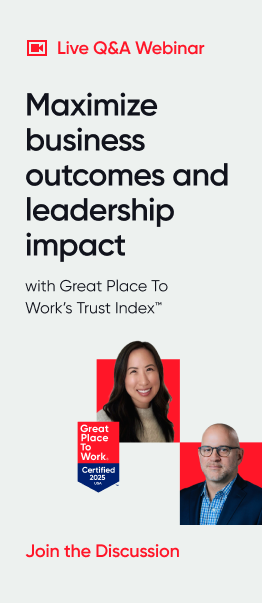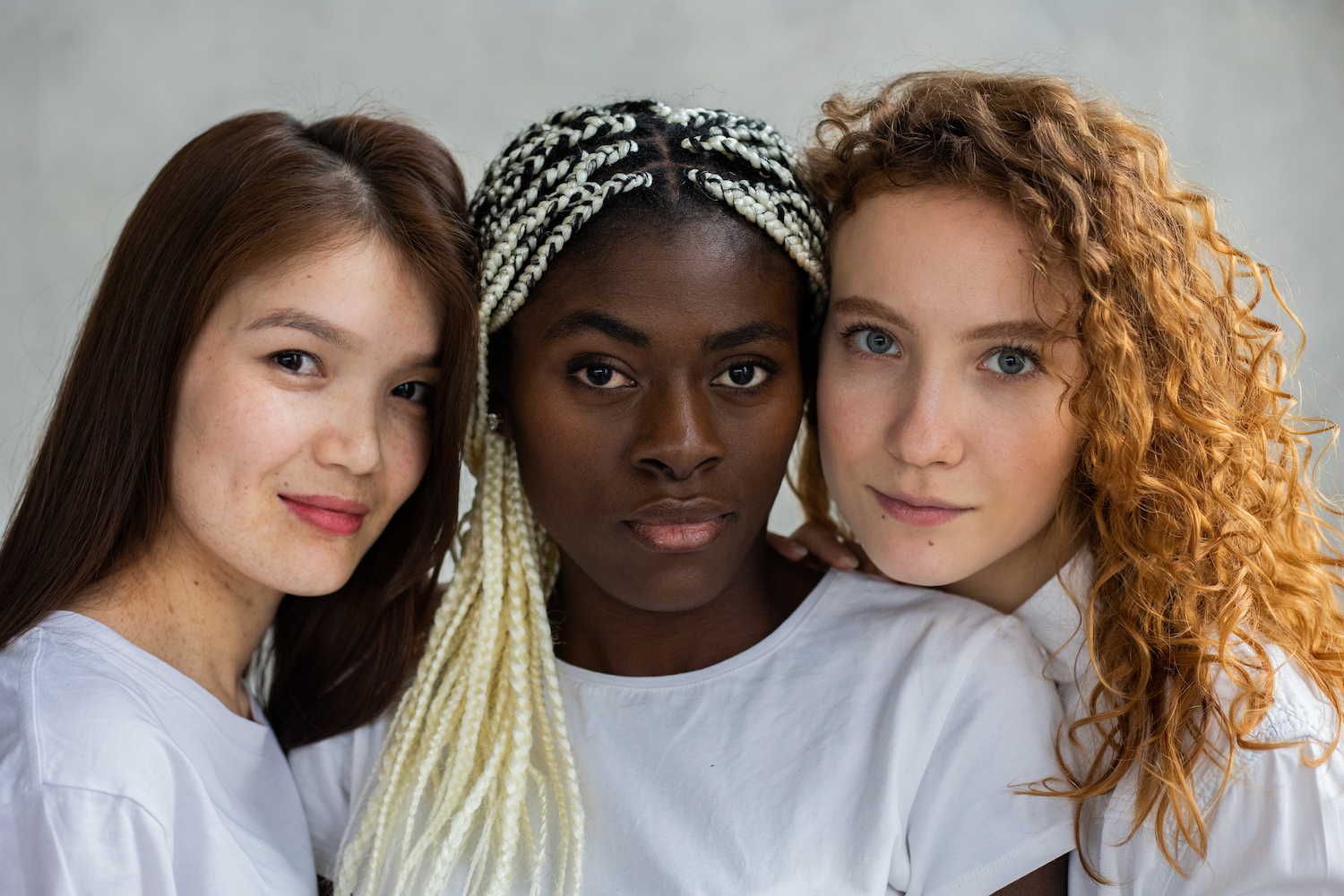Diversity & Inclusion, Employee Experience, Equity, Women in the Workplace
To create an environment where women can thrive, find opportunities for mentorship, visibility, and connection.
You know that women are having a wide range of experiences in your organization.
Experience gaps are opportunities for organizations to expand the success they have had with one group of employees to all employees. So, how can you start to make change?
“Fundamental to success is leadership,” shares Ty Breland, EVP and chief human resources officer with Marriott International, the No. 20 large company on the 2022 Fortune Best Workplaces for Women™ List.
“Bring your leaders together to engage in dialogue and practices on the development of women to drive gender equity. Then, hold one another accountable for making sustainable change.”
Here are five action items:
1. Identify and develop plans to close the pay gap.
There hasn’t been much change on the gender pay gap in the last 20 years, according to data from Pew Research. In 2022, women earned an average of 82% of what men earned. In 2002, it was 80%.
What’s driving the gap? Pew Research suggest that stubborn cultural norms around family and dependent care are to blame, with gender parity disappearing for women later in their careers, despite starting on more equal footing with men.
Increased workplace flexibility may hold some answers, too.
Closing the pay gap for women isn’t a forlorn hope. At the Best Workplaces for Women, 81% of women employees report fair pay, with no significant difference compared to men at the same companies.
2. “Find the potential in people they may not see in themselves.”
This advice comes to Great Place To Work® from Neumiia Duncan-Reed, vice president of human resources and community impact for Allegiant Stadium in Las Vegas, Nevada.
Duncan-Reed shared this tip as part of a presentation sponsored by BERG, the employee resource group for Black employees at Great Place To Work.
Leaders have to be willing to put faith in people who don’t have the credential or the experience that might make them a more comfortable choice for a role. If leaders don’t make that generous first step, it’s hard to start the journey that builds trust and transforms a workplace.
“The first step usually has to come from leadership,” says Sarah Lewis-Kulin, vice president of global recognition and research at Great Place To Work. “You're going to start a virtuous cycle, but you have to make a show of faith first. You have to do something a little disruptive.”
“Fundamental to success is leadership.” - Ty Breland, CHRO, Marriott International
3. Offer a warm welcome when women join your organization.
Whether or not an employee feels comfortable bringing their full self to work is often influenced by the onboarding process. First impressions are your first opportunity to be truly inclusive.
For Marriott, the idea of a welcoming is a core part of its identity as a company.
“We encourage all our associates to bring their whole selves to work, and we offer a range of programs and initiatives to enable everyone to flourish,” says Breland. Programs include flexible work arrangements, networking opportunities, and career development.
4. Ensure women have visibility.
As many companies are laser-focused on performance and productivity for 2023, it’s crucial that women have visibility with top leaders.
Lewis-Kulin highlights in particular how flexible work offerings appear to be at odds with an increased focus on performance. Will women who are taking advantage of increased flexible work post-pandemic be overlooked for promotions?
“We know that hybrid work is complicated,” she says. One of the concerning implications of hybrid work for Lewis-Kulin is that leaders will have reduced contact with people outside of their network, keeping underrepresented groups from rising up through the ranks.
In 2022, women earned an average of 82% of what men earned. In 2002, it was 80%.
One way to offer visibility is through a leadership development program.
Marriott’s Emerging Leader Program (ELP) is part of the hotel chain’s effort to create a more diverse leadership pipeline with a focus on developing high-performing women and people of color. And the success of the program has seen Marriott expand the focus beyond senior managers to develop the talent at various levels of the organization.
“The ELP now brings together emerging talent of different backgrounds at various career stages, offering a 12-month cross-discipline, cross-brand development experience that includes mentoring, sponsorship, stretch assignments, job shadows, and special projects,” Breland explains. “Since its inception, ELP has played a crucial role in fueling a stronger leadership pipeline and providing our associates with more opportunities to thrive.”
5. Help women tell their stories.
Do employees have the opportunity to share their life experience with the wider organization? Tech firm Cisco created a Proximity Initiative to bring help senior executives connect with employees with a different background from their own.
“Do your executives have exposure to a diverse set of women? Can they even hear those stories?” Lewis-Kulin says. “Knowing people one-on-one is going to help.”
A key tool for finding employee stories is the employee resource group (ERG).
Lewis-Kulin recommends having different groups come together to think about how overlapping identities can be supported and celebrated in the workplace.
“You might have a women's ERG, but what happens if you get your women's ERG and your ERG around disability or your ERG around race/ethnicity together, and they say, ‘What could we do to better support women in our workplace?’” she says.
That’s where the magic happens.
Subscribe
Learn how to create an award-winning company culture. Subscribe to the Great Place To Work company culture newsletter and join 100,000+ other leaders learning how to create a great workplace.











